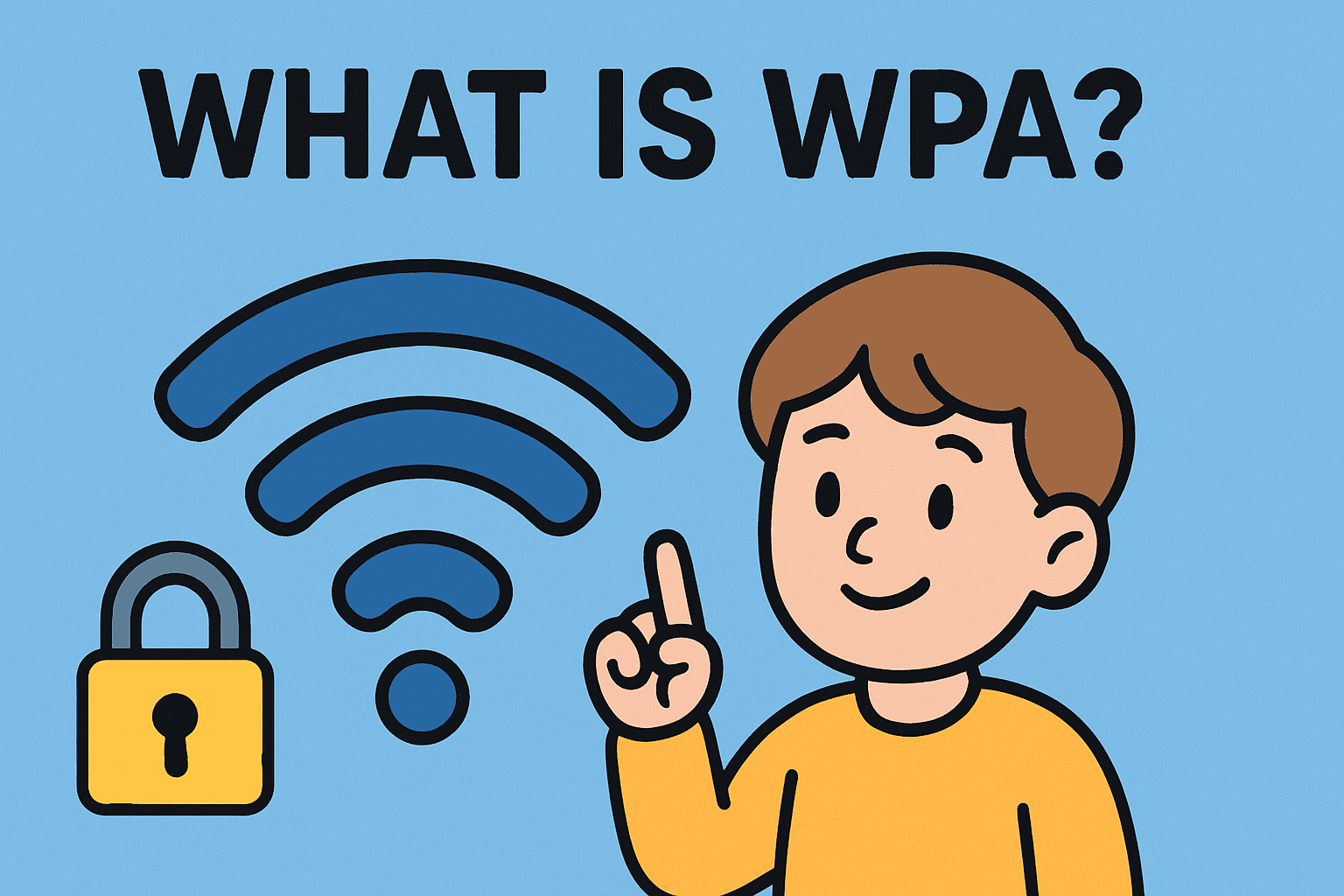Updated on September 23, 2025, by OpenEDR
Have you ever wondered what is WPA and why it’s so important for protecting your Wi-Fi network? With over 4.6 billion internet users worldwide, most rely on wireless connections daily. Yet, many don’t realize their Wi-Fi is only as secure as the protocol guarding it.
WPA, or Wi-Fi Protected Access, is the security protocol that keeps unauthorized users and cybercriminals from breaching your wireless network. For IT managers, CEOs, and cybersecurity professionals, understanding WPA isn’t just technical jargon—it’s critical to preventing data theft, ransomware, and compliance violations.
What Is WPA? (Wi-Fi Protected Access Explained)
WPA stands for Wi-Fi Protected Access, a family of security protocols created to secure wireless computer networks. It was introduced by the Wi-Fi Alliance in 2003 to replace the vulnerable WEP (Wired Equivalent Privacy) standard.
WPA encrypts the data transmitted over Wi-Fi so that even if cybercriminals intercept it, they cannot read the information. Think of WPA as a digital lock on your wireless connection.
Key points about WPA:
Developed as an upgrade to WEP.
Uses encryption methods like TKIP (Temporal Key Integrity Protocol) and later AES.
Designed to prevent unauthorized access and protect data integrity.
Versions of WPA: From WPA to WPA3
When exploring what is WPA, it’s essential to understand the different versions and their strengths.
WPA (2003)
Introduced as a quick fix to WEP vulnerabilities.
Uses TKIP for encryption.
More secure than WEP but considered outdated today.
WPA2 (2004)
Industry standard for over a decade.
Uses AES (Advanced Encryption Standard) for stronger protection.
Offers both Personal (PSK) and Enterprise modes.
Still widely used but not immune to attacks like KRACK.
WPA3 (2018 – Present)
Latest and most secure standard.
Uses SAE (Simultaneous Authentication of Equals) for password protection.
Protects against brute-force attacks.
Mandatory for Wi-Fi certification since 2020.
👉 Verdict: For modern businesses, WPA3 is the gold standard in wireless security.
Why WPA Is Critical for Businesses
For IT managers and CEOs, asking what is WPA isn’t just academic—it’s a business priority. Weak wireless security can lead to:
Data breaches costing millions in damages.
Ransomware attacks exploiting unsecured Wi-Fi.
Compliance failures (HIPAA, GDPR, PCI DSS) with heavy fines.
Reputation loss and eroded customer trust.
Real-World Example
In 2022, a healthcare provider faced a breach through weak Wi-Fi encryption. Hackers stole sensitive patient data, leading to lawsuits and regulatory fines. This highlights why enterprise-grade Wi-Fi security protocols are non-negotiable.
WPA vs Other Wi-Fi Security Protocols
| Protocol | Encryption Method | Security Level | Status |
|---|---|---|---|
| WEP | RC4 | Weak | Obsolete |
| WPA | TKIP | Moderate | Outdated |
| WPA2 | AES | Strong | Widely Used |
| WPA3 | AES + SAE | Very Strong | Current Standard |
👉 If your business still uses WEP or WPA, it’s time to upgrade immediately to WPA2 or WPA3.
How to Check Which WPA Version You’re Using
IT managers should routinely verify Wi-Fi settings. Here’s how:
Windows:
Open “Network & Internet Settings.”
Select your Wi-Fi network → “Properties.”
Look for Security Type.
Mac:
Hold “Option” + click Wi-Fi icon.
Check “Security” field.
Routers:
Log into admin panel.
Navigate to “Wireless Security Settings.”
Change to WPA2 or WPA3 if needed.
Best Practices for WPA Security
To maximize wireless protection, follow these best practices:
✅ Always use WPA3 if supported.
✅ Change default router passwords.
✅ Update router firmware regularly.
✅ Use strong, unique passphrases.
✅ Segment guest Wi-Fi from business networks.
Why WPA Alone Isn’t Enough
Even the strongest WPA protocol can’t guarantee full protection if combined with weak endpoint security. Modern cyber threats like zero-day exploits and ransomware require advanced defenses.
That’s why forward-thinking organizations pair WPA with:
Endpoint Detection & Response (EDR)
Zero Trust architecture
Next-gen antivirus solutions
👉 A powerful, open-source EDR like OpenEDR can complement WPA by providing real-time endpoint monitoring and incident response.
FAQs: What Is WPA?
1. Is WPA still secure?
WPA (the first version) is outdated. WPA2 is strong but vulnerable to some attacks. WPA3 is the most secure option available today.
2. What’s the difference between WPA2 and WPA3?
WPA3 uses stronger encryption (SAE), protecting against brute-force attacks, while WPA2 relies on pre-shared keys.
3. Can hackers crack WPA?
Yes, older WPA and even WPA2 can be cracked with the right tools. WPA3 makes this much harder.
4. Should businesses upgrade to WPA3?
Absolutely. For compliance, data security, and risk reduction, WPA3 is now the recommended standard.
5. Does WPA protect against ransomware?
No, WPA only secures wireless transmission. You still need endpoint protection, EDR, and strong security policies.
Conclusion: Why WPA Is Essential for Cybersecurity
So, what is WPA? It’s the backbone of Wi-Fi security, protecting data as it travels over wireless networks. From WPA to WPA3, the protocol has evolved to meet the demands of today’s cybersecurity landscape.
For businesses, securing Wi-Fi with WPA3 plus advanced endpoint protection is the smartest move. While WPA locks down the wireless gateway, tools like OpenEDR deliver real-time monitoring, threat detection, and incident response—giving you layered defense against modern threats.
👉 Secure your business today: Register for OpenEDR Free
